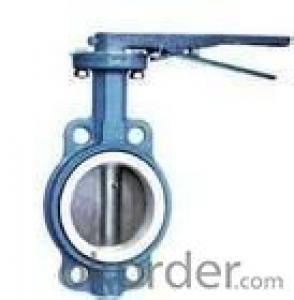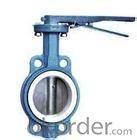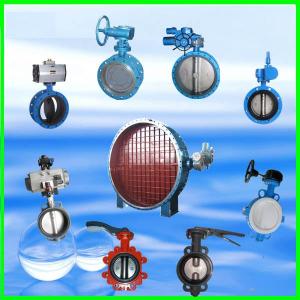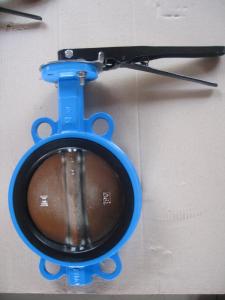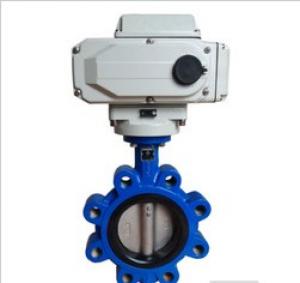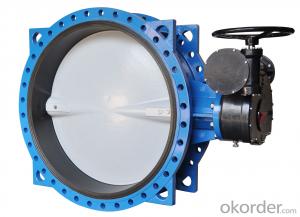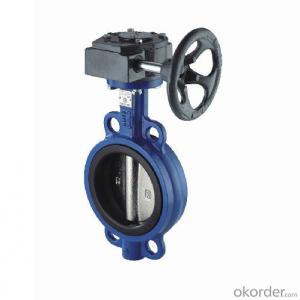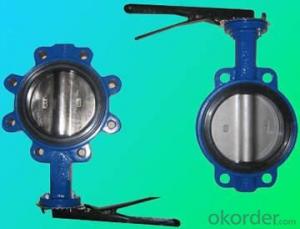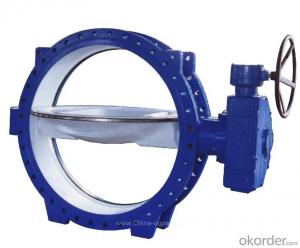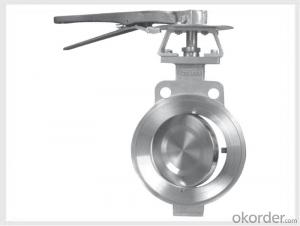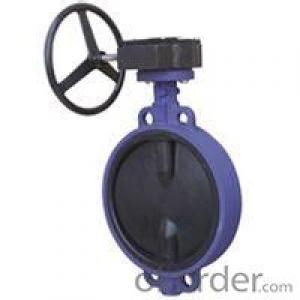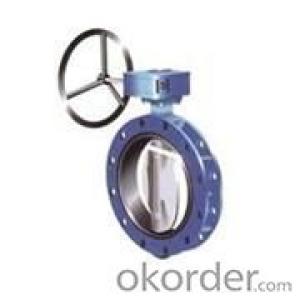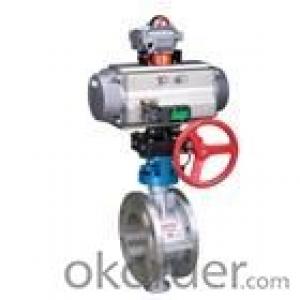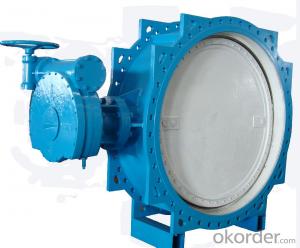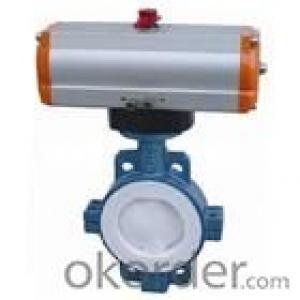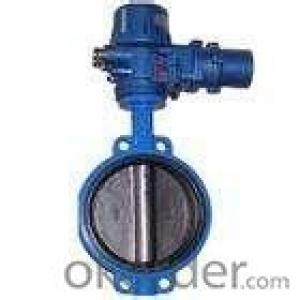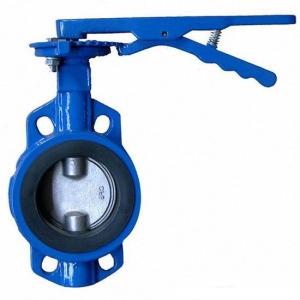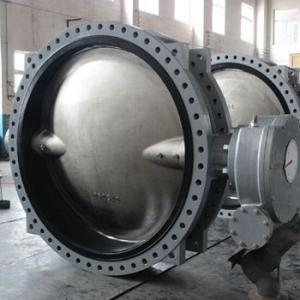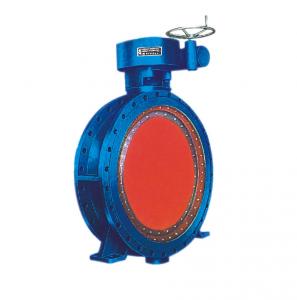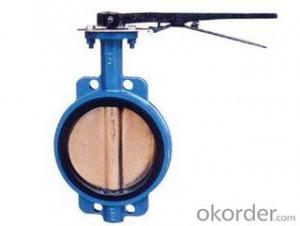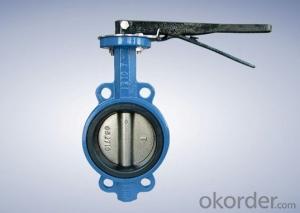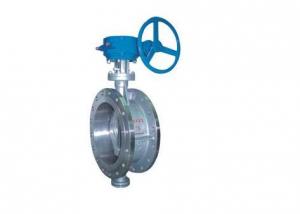butterfly valve resilient gate valves
- Loading Port:
- China Main Port
- Payment Terms:
- TT OR LC
- Min Order Qty:
- -
- Supply Capability:
- -
OKorder Service Pledge
OKorder Financial Service
You Might Also Like
Quick DetailsStandard or Nonstandard: Standard Structure: Gate Pressure: Medium Pressure
Power: Manual Material: Casting Temperature of Media: Medium Temperature
Media: Water Port Size: DN40mm-DN300 Place of Origin: China (Mainland)
Model Number: GF4 resilient gate valves: resilient seat flange
Packaging & DeliveryPackaging Detail: air plastic bag inside/wooden box outside
Delivery Detail: 15-60days
SpecificationsDIN3352 F4 resilient seat flange gate valves
1.s:DN40-DN300 ize
2.medium:water
3.standard:DIN
4.certificate:ISO9001 CE
resilient gate valves
1.size:DN40-DN300
2.medium:water
3.certificate:ISO9001 CE
4.standard:DIN
available medium:water
working temperature:≤80oC
flange dimensions:DIN2501
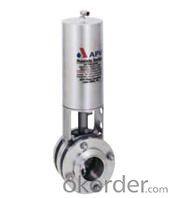
- Q: What is the difference between turbine butterfly valve and flanged butterfly valve?
- Worm gear flange butterfly valve, also known as worm gear flange plate valve, is a simple structure of the control valve, but also can be used for low pressure pipe medium switch control. Butterfly valve refers to the closure of parts (valve or butterfly plate) as the disk, around the valve shaft to achieve rotation and closing of a valve, the main cut off on the pipe and throttling role. Butterfly valve headstock is a disc shaped disc, in the valve body around its own axis of rotation, so as to achieve the purpose of opening or closing or regulation. Butterfly valve used in furnace, coal gas, natural gas, liquefied petroleum gas, city gas, hot and cold air, chemical smelting and power generation environmental protection engineering system, conveying a variety of corrosive and non corrosive media pipeline, used to adjust and cut off the media flow.Butterfly valve structure is simple, small size, light weight, only by a few parts. The utility model can be rapidly opened and closed only by rotating 90 DEG, the operation is simple, and the valve has good fluid control characteristics. Butterfly valve plate installed in the direction of the diameter of the pipe. In the butterfly valve body cylindrical channel, the disc shaped butterfly plate revolves around the axis, the rotation angle is 0 degrees ~90 degrees between, when rotates to 90 degrees, the valve opens the card completely. When the flange butterfly valve is in the fully opened position, the butterfly plate thickness is the only resistance when the medium passes through the valve body, so the pressure drop produced by the valve is very small, so that the flow control characteristic is better. Butterfly valve with bullet sealing and metal sealing two seal type. Resilient sealing valve. The sealing ring can be mounted on the valve body or attached to the periphery of the disc.
- Q: How many kinds of butterfly valves are there?
- [main classification]1, according to drive points(1) electric butterfly valve(2) pneumatic butterfly valve;(3) hydraulic butterfly valve;(4) manual butterfly valve;2, according to the structure of the form:(1) Central sealed butterfly valve(2) single eccentric sealed butterfly valve(3) double eccentric sealed butterfly valve(4) three eccentric sealed butterfly valve;3, sealing surface material quality:(1) soft sealing butterfly valve.1) the sealing pairs are made of non-metallic soft materials, which are made of non-metallic soft materials.2) the sealing pair is made of metal hard material and is made of non-metallic soft material.(2) metal hard sealing butterfly valve. The sealing pair is made of metal hard material and is made of metal hard material.4, according to sealed form points:(1) forced sealing butterfly valve.1) elastic sealing butterfly valve. The pressure of the valve seat, seat, or plate is produced when the seal is closed by the pressure from the valve.2) additional torque seal butterfly valve. The seal is produced by a torque that is applied to the valve shaft.(2) pressure sealed butterfly valve. The pressure is greater than the pressure on the seat or plate.(3) automatic sealing butterfly valve. The pressure of the seal is automatically generated by the pressure of the medium.
- Q: When will Butterfly Valves be used?
- Butterfly valve has the advantages of simple structure, easy operation, small footprint and light weight;1, for the city water supply network in general, DN300 still DN300 valve, butterfly valve above, this installation is convenient (especially large diameter valve installation is inconvenient, the weight of large volume, big);2, there are sediment pipeline, such as powder, mud and other mixed substances;
- Q: The difference between butterfly valve d71x_10s and d341s-10
- Before distinguishing between the two, you must first read the identification of the valve type:D stands for butterfly valves,3 means that the worm gear is connected and the drive does not indicate the handle7 and 4 indicate pipe to clamp connection, pipe flange connection, respectively1 means single eccentric, that is, the stem is not in the center of the butterfly plateThe former S indicates the material name of the valve body - plastic, X means sealing and the lining material is rubberThe latter S indicates the sealing lining material code ---- plastic, and the valve body is cast iron.10 means stress.
- Q: Butterfly valve flow direction is single or two-way?
- Hello, soft sealing butterfly valve is generally two-way flow, large bore with flow direction is one-way flow. Hard sealed butterfly valves are the same.
- Q: Import electric butterfly valve which brand is more reliable?
- Recommend Sichuan Ding Heng petroleum machinery company sales agent SPM butterfly valve and FMC butterfly valve, we are partners for many years, have been working together are very happy.
- Q: What does the model D373H-16C of butterfly valve mean?
- D373H-16C said: D type butterfly valve butterfly valve 3 said, said 7 of the turbine, said clip, 3 said the three eccentric (swash plate), 16 C nominal pressure, said carbon steel. In fact, if you want to understand this, to understand the valve 3.07ghz, later met have to be attached to the valve. 3.07ghzModel for valves, valve number indicates valve type valve should normally be that type, drive type, connection type, structural features, nominal pressure, sealing surface material, body material and other factors. Standardization of the valve type of valve design, selection, distribution, provide more convenient. The type of valve types and materials are more and more more models of the preparation of the valve will become more and more complicated. Although the preparation of our valve type unified standard, but gradually can not meet the needs of the valve industry. At present, the valve manufacturer usually adopt a unified numbering; not uniform numbering, the manufacturer can make out no.methods according to their own situation. Unit two unit three unit four unit five unit six unit seven unit
- Q: What are the advantages of butterfly valves?
- Butterfly valve, also known as shutter valve, its advantages are:A. has a large circulation capacity and is about 1.2 times the same size as two seat valves;
- Q: What does the butterfly valve model d344h, d345h, d346h, d347h mean?
- According to the international standard of the letters and numbers apart to explain D344H D is a unit of butterfly valve, two unit 3 is driving mode: turbine, three unit 4 connection: flange connection, four unit 4 Structure: seal type linkage, five unit H sealing material: Cr13 stainless steelD345H compare yourself to the above. Unit 5 four is a sealed, single eccentric structureD346H four unit 6 is an unsealed center vertical plateD347H four unit 7 is unsealed double eccentricIn general, there is only one difference between them: the structural form is different!
- Q: Butterfly valve D71X-16 and D71X-16Q what is the difference?
- Q should be made up of their own, generally 16, behind the body material, C carbon steel, P stainless steel, etc., have not seen Q, and 16, no symbol behind, representing the cast iron,
Send your message to us
butterfly valve resilient gate valves
- Loading Port:
- China Main Port
- Payment Terms:
- TT OR LC
- Min Order Qty:
- -
- Supply Capability:
- -
OKorder Service Pledge
OKorder Financial Service
Similar products
Hot products
Hot Searches
Related keywords
